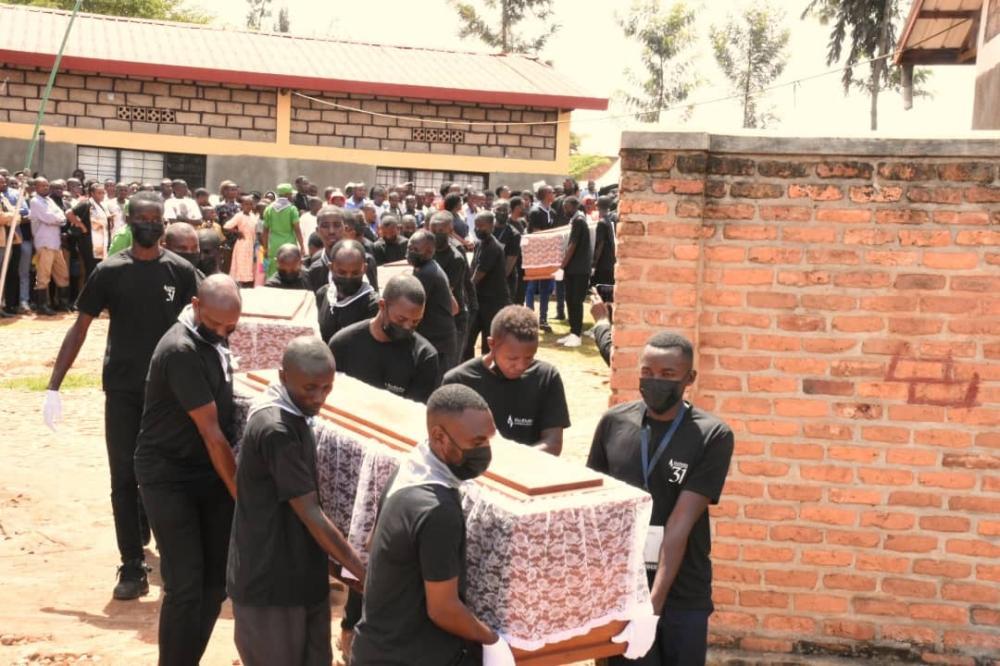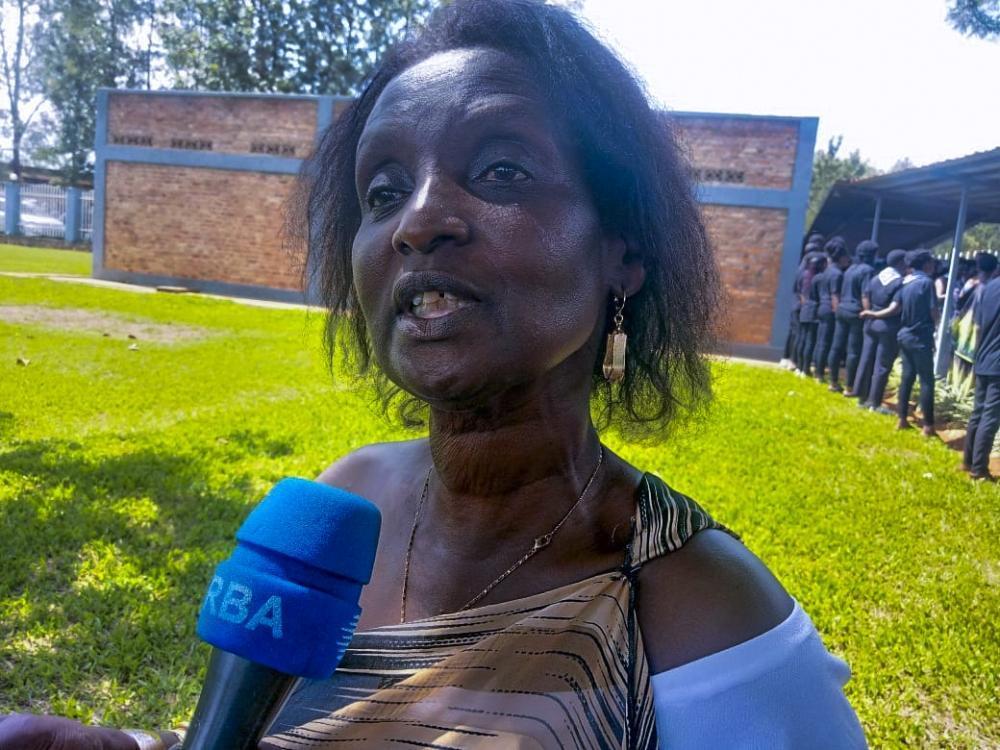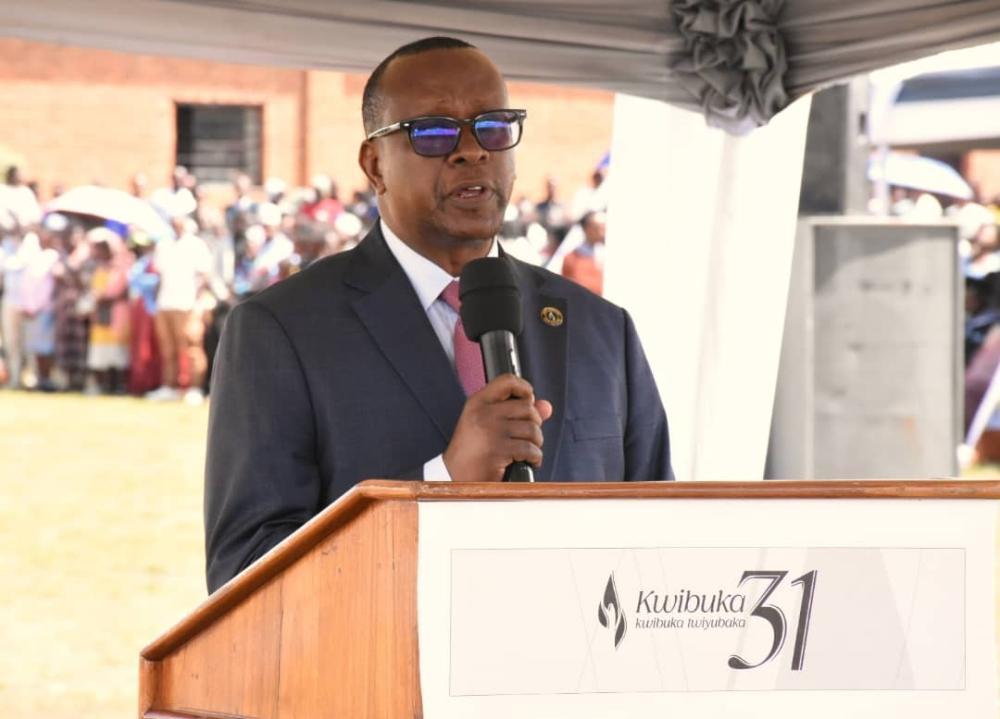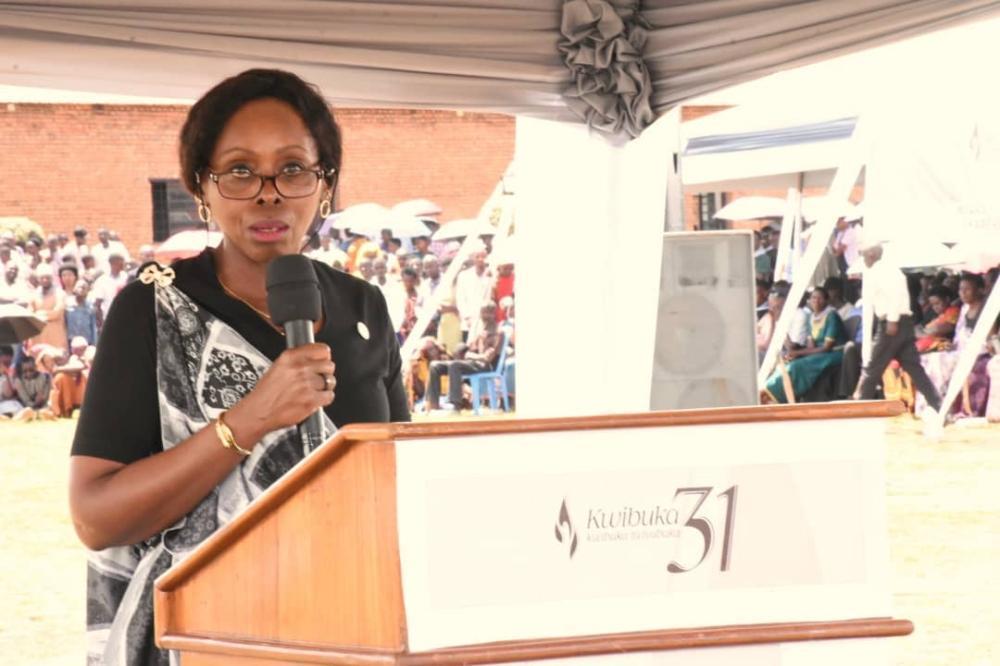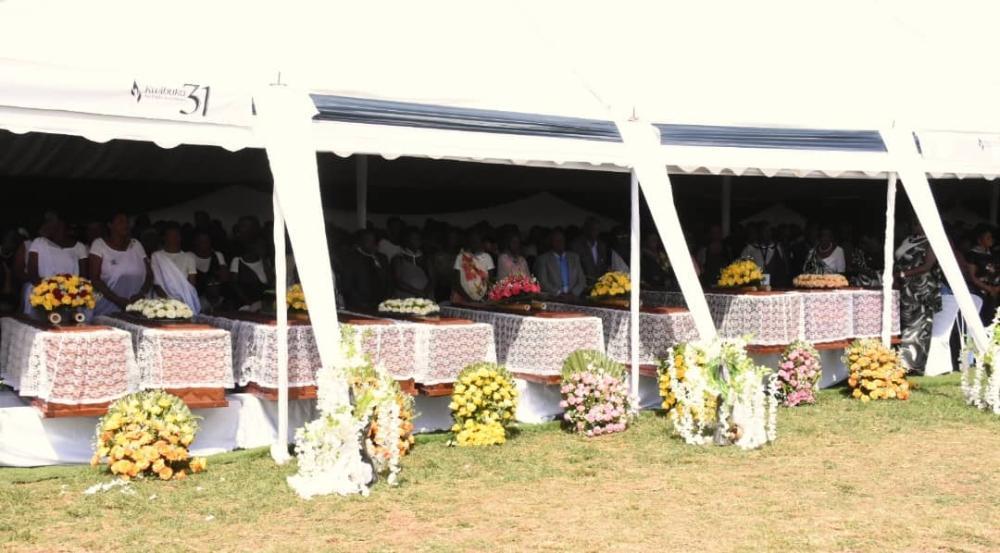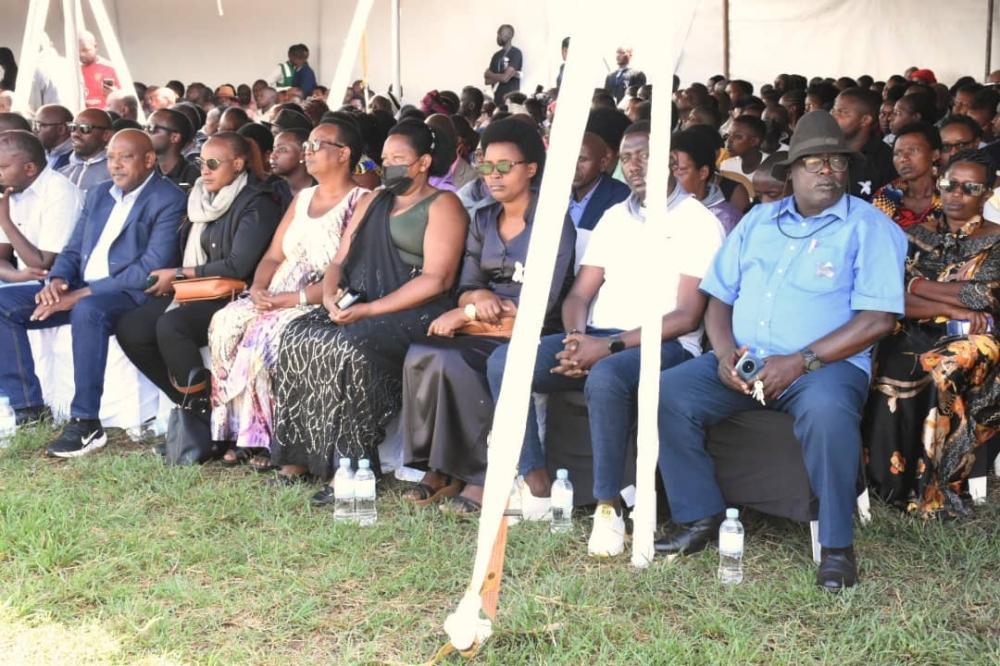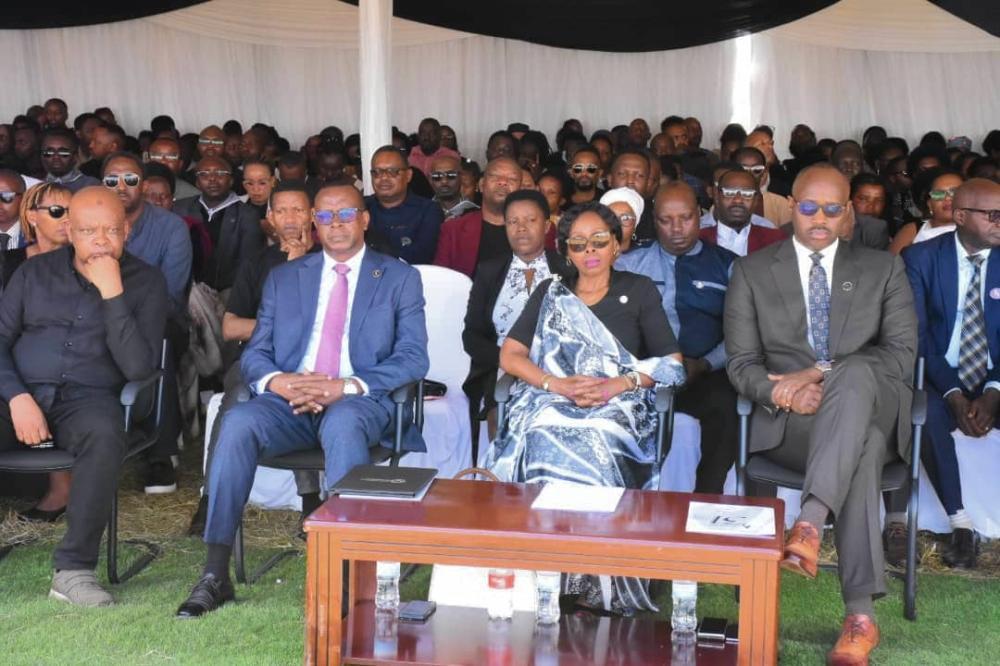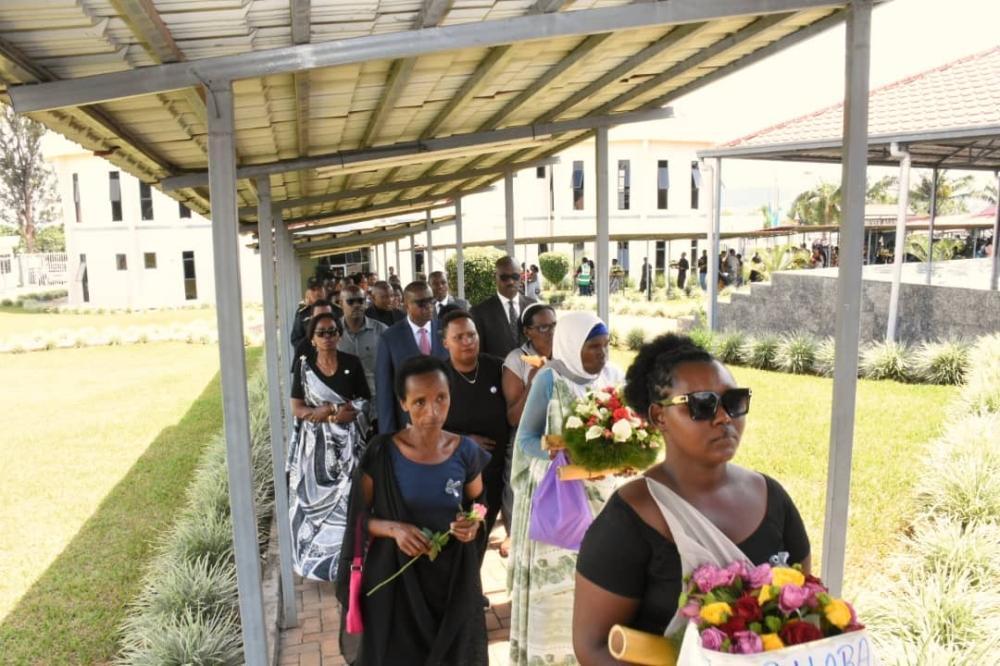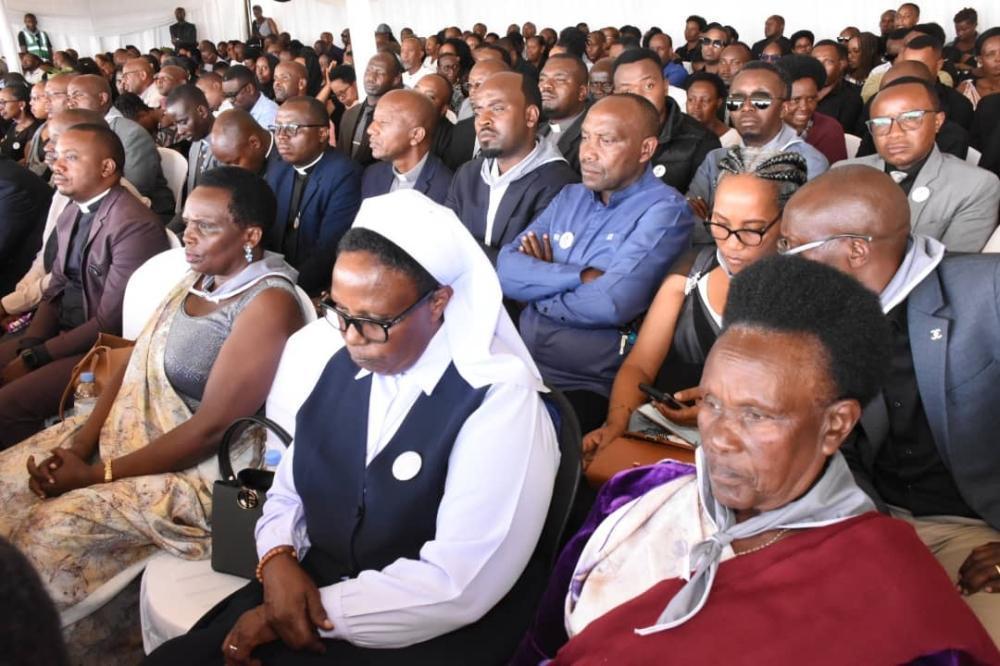Africa-Press – Rwanda. Survivors of the 1994 Genocide against the Tutsi are urging people who continue to withhold information about the whereabouts of victims of the mass massacres to come forward and help families find closure.
They made this appeal during the burial ceremony for 21 newly identified genocide victims’ bodies, held on April 11 at Kiziguro Genocide Memorial.
The ceremony brought together survivors, their families, and government officials, at the memorial which already holds the remains of over 20,000 victims.
Kiziguro, once part of the former Murambi Commune, carries a painful legacy. According to survivors, targeted killings in the region began as early as 1991, particularly in Rwankuba.
By April 1994, thousands of the Tutsi who had fled to the Catholic Church in Kiziguro seeking refuge were betrayed, murdered, and their bodies dumped into a pit behind the sanctuary under the orders of Jean-Baptiste Gatete, the then mayor of Murambi.
Only 11 people were rescued from the mass grave. Today, only five of those survivors are still alive, according to Jean Nepomuscene Sibomana, the President of the genocide survivors’ association, Ibuka, in Gatsibo District.
Francoise Uzamukunda a genocide survivor in Gatsibo district, appealed to whoever has information about unburied victims of the 1994 genocide against Tutsi, to step up and help the closure with a dignified burial.
Françoise Uzamukunda, who was born in the former Murambi Commune—now part of Gatsibo—is among the few who lived to tell the story.
After days of hiding in sorghum fields, she narrowly escaped by crawling through a pile of corpses under the cover of darkness. Bleeding and barely conscious, she reached Gikomera Parish, where the Rwanda Patriotic Army (RPA) rebels, who had liberated the area, found her.
“When you survive something like this,” Francoise said, speaking softly, “everyone buried becomes your family.”
She continued: “We accepted their death, but it is heartbreaking to discover a body in someone’s backyard—where information was concealed for over 30 years.
“True reconciliation with the perpetrators must be based on truth. Telling us where our relatives’ [bodies] are will bring us relief, and we are ready to forgive.”
By April 11, the violence had spread to other parts of Eastern Province, including Muhura, Gituza, and Ngarama.
The Minister of National Unity and Civic Engagement, Jean-Damascène Bizimana delivers his remarks during the commemoration event in Kiziguro on Saturday, April 12.
Even as Rwanda continues to heal and rebuild, genocide denial remains a persistent threat. During the ceremony, the Minister of National Unity and Civic Engagement, Jean-Damascène Bizimana, delivered a message against denial and revisionism, warning that such ideologies still thrive—particularly within some religious institutions.
“Genocide denial still roams in churches,” he said, citing a Rwandan priest in Canada who publicly denies that the 1994 Genocide victims were Tutsi.
“Such individuals remain bona fide members of the church while spreading falsehoods,” he added. “Let us be clear—the genocide did not erupt spontaneously. It was calculated, planned, and executed.”
He also directly addressed families in the area that have ties with known genocide ideologues.
“Jean-Baptiste Nkuriyingoma, Ali Yusufu Mugenzi, and others—all originally from Gatsibo—I urge their families to take heed. Rwanda stands firmly against any form of genocide denial and will never relent in combating the ideology of hate they continue to propagate.”
To honor the memory of victims and strengthen telling the truth, Sibomana proposed the construction of a permanent monument at Kiziguro Catholic Church. “A monument in the church will remind us, and the world, that these atrocities were real,” he said.
“It will stand as a vow of Never Again to future generations.”
The Minister of Public Service and Labour, Christine Nkurikiyinka, echoed the call to confront silence.
The Minister of Public Service and Labour, Amb, Christine Nkurikiyinka addresses mourners during a decent burial of 21 bodies of the victims of the Genocide against the Tutsi at Kiziguro memorial on Saturday, April 12. All photos by Emmanuel Nkangura
She cited a Rwanda Investigation Bureau (RIB) survey revealing that Eastern Province records the highest rate of people concealing information about the genocide.
“One in three people admit they know something but have not come forward,” she noted.
She stressed that justice cannot exist without truth.
“The Tutsi were massacred in churches, thrown into rivers, and hunted in their homes. Those who committed these atrocities must understand that genocide crimes do not age. Telling the truth is not optional—it is justice,” she said.
“It’s time to step up. It’s time to speak out. Supporting reconciliation begins with telling the truth.”
As the 21 coffins were gently lowered into the ground, survivors wept, but they also expressed gratitude.
“If it weren’t for the RPA, we wouldn’t be here telling these stories,” Uzamukunda said, her voice firm yet emotional.
“We survived. Our children went to school. And now, they have hope.”
A total of 21 bodies were given a dignified burial at Kiziguro Genocide Memorial on Saturday.
For More News And Analysis About Rwanda Follow Africa-Press

